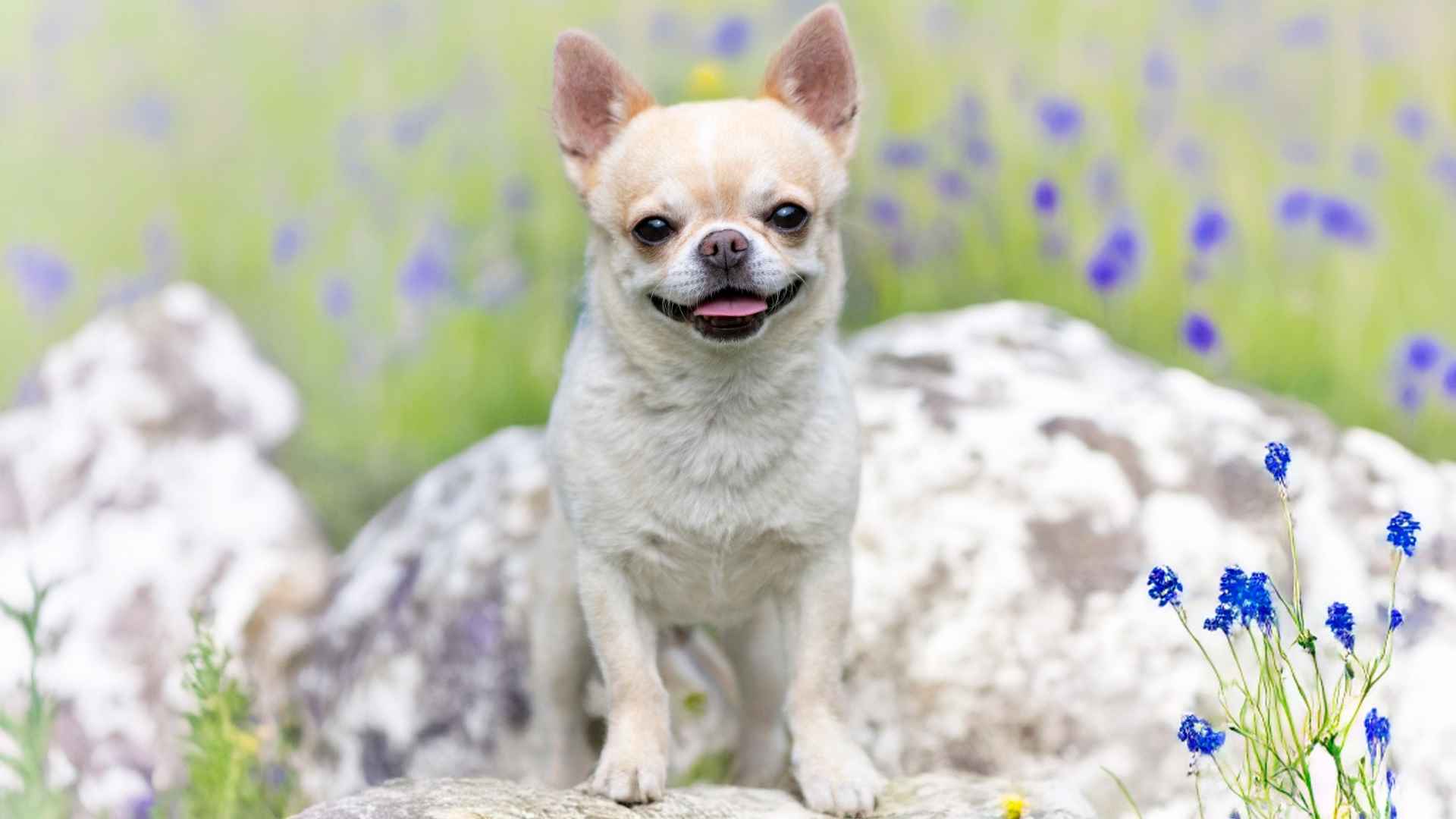Small dog breeds have long captured the hearts of pet lovers with their charm, portability, and adaptability. Originally bred for specific roles, ranging from hunting small game to warming laps of royalty, these compact companions now enjoy immense popularity for their convenience and lovable personalities. Their petite size makes them a perfect fit for apartments, city living, and families seeking an affectionate yet manageable pet.
Beyond their cuteness, small dogs come with practical benefits. They’re easier to transport, often have lower food and veterinary costs, and typically require less space than their larger counterparts. It’s no surprise that breeds like the French Bulldog, which topped the American Kennel Club’s popularity chart for the third year in a row, continue to dominate hearts and homes across the country.
So, which pint-sized pups are winning over households nationwide? In this article, we’ll walk you through the most popular dog breeds, what makes them so beloved, and what to expect if you’re thinking of welcoming one into your family. From personality quirks to care tips, these top picks are as functional as they are adorable.
Most Popular Small Dog Breeds
1. French Bulldog
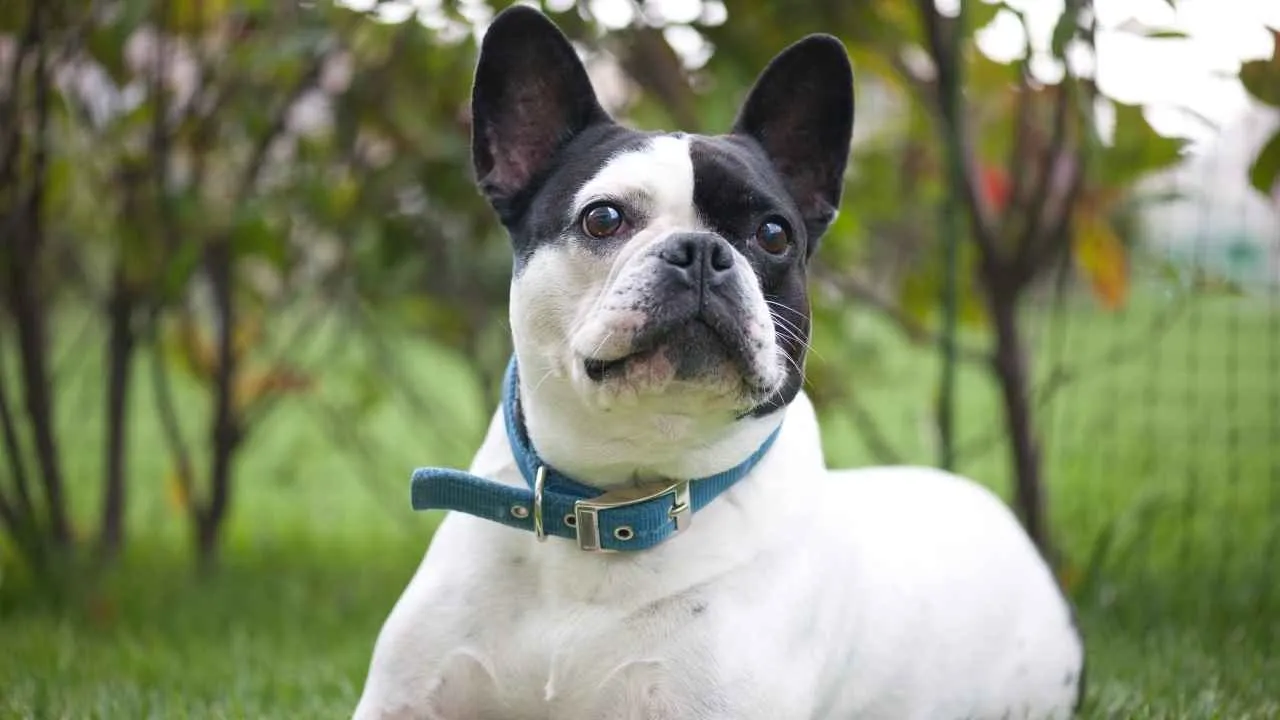
Topping popularity charts year after year, the French Bulldog, or “Frenchie”, is one of the most beloved small dog breeds across the globe. According to the AKC, the French Bulldog stands out with its unique bat-like ears and calm temperament, making it one of the most favored small dog breeds, particularly among people living in urban areas.
Beneath their muscular exterior lies a gentle, affectionate spirit, making them ideal companions for families, singles, or city dwellers. While they may have a streak of stubbornness, their playful nature and eagerness to please usually make training a smooth experience.
Care Needs
French Bulldogs are relatively low-maintenance, but they do have specific care considerations. Their short, smooth coat requires minimal grooming, but they are prone to obesity, so portion control and high-quality dog food are essential. Regular vet checkups are important to monitor their weight and overall health, especially since excess pounds can worsen breed-specific issues.
They don’t need much outdoor activity, but moderate play and short walks help keep them fit. Keep in mind that due to their flat faces, Frenchies can struggle in hot or humid climates and should be kept cool and well-hydrated.
Fact: Despite their tough-looking exterior, French Bulldogs rarely bark and are known for being excellent, alert watchdogs, making them city favorites worldwide.
2. Poodle
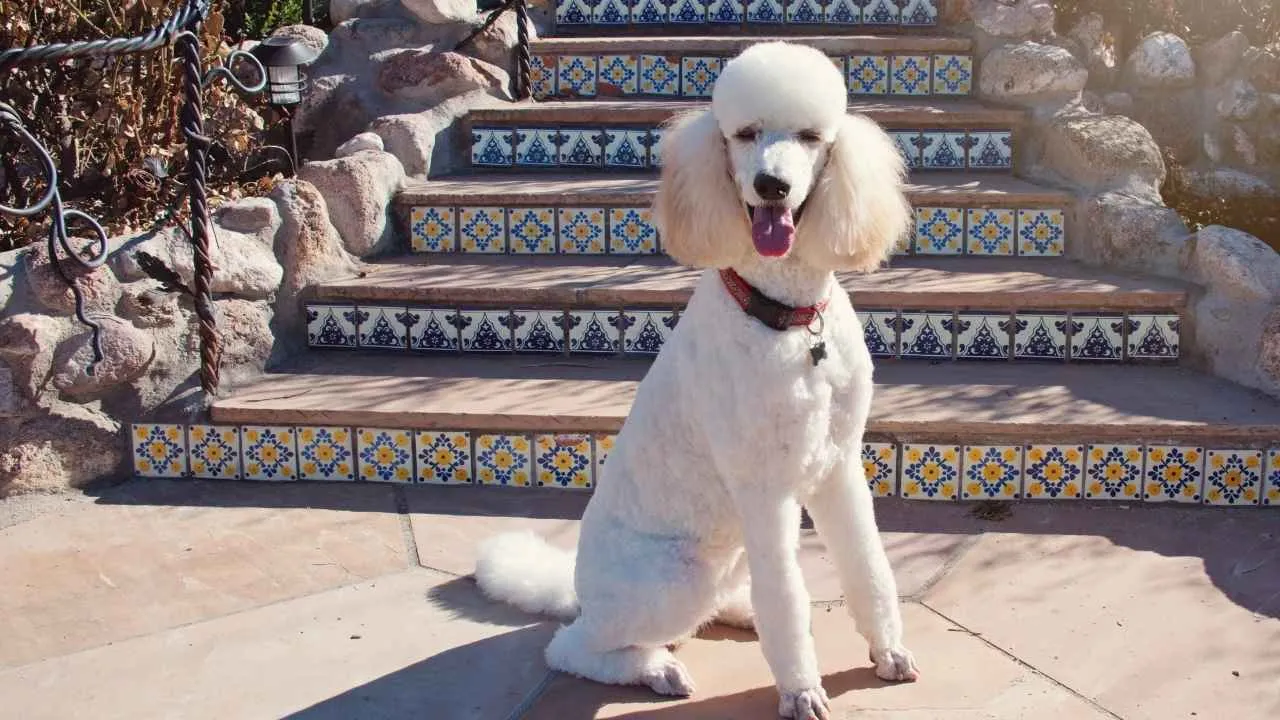
Beloved for their elegance, intelligence, and versatility, Poodles, particularly the Miniature and Toy varieties, consistently rank among the most popular small dog breeds. These curly-coated charmers are more than just show dogs; they’re loyal, playful, and highly trainable companions. Miniature and Toy Poodles typically weigh between 10 to 15 pounds and stand under 15 inches tall, making them perfect for smaller homes or apartments.
PetMD notes that Poodles are renowned for their intelligence, refined appearance, and often-praised “hypoallergenic” coat, which helps explain their lasting popularity as a dog breed. Their lively personalities and keen minds make them especially appealing to families and seniors alike.
Care Needs
While Poodles are often praised for their hypoallergenic coats, those signature curls require regular maintenance. Frequent brushing and professional grooming every 4 to 6 weeks help prevent matting and keep their coat healthy. Though small, Poodles are energetic and thrive on daily mental and physical stimulation, such as puzzle toys, short walks, or training games.
Owners should also monitor for common health concerns such as patellar luxation, hip dysplasia, and eye conditions like cataracts or progressive retinal atrophy (PRA). With proper care, Poodles are known for their impressive longevity.
Fact: The term “teacup Poodle” refers to an unofficial, extra-small variation, which is not recognized by major kennel clubs due to serious health risks associated with extreme miniaturization.
3. Dachshund
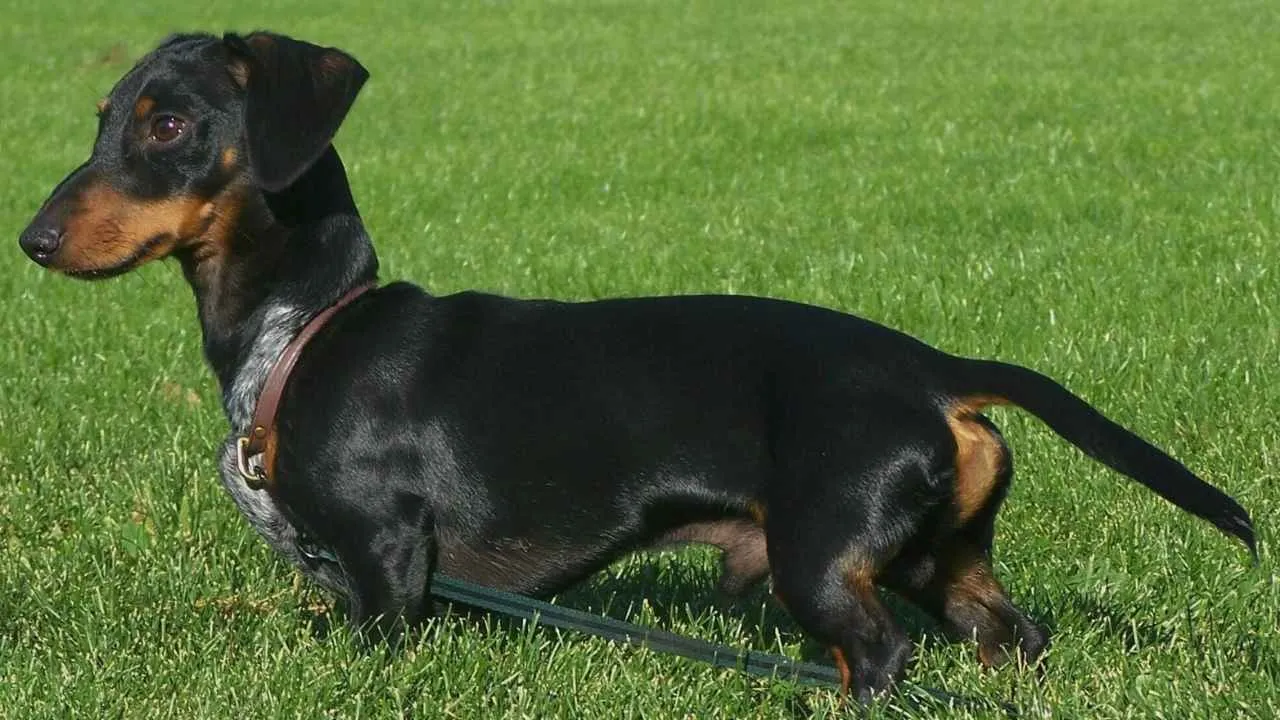
Affectionately known as the “wiener dog” or “doxie,” the Dachshund is instantly recognizable thanks to its long body and short legs. According to Britannica, the Dachshund is a breed with both hound and terrier roots, originally developed in Germany to track and chase badgers into their dens.
Available in both standard and miniature sizes, this breed has won hearts worldwide with its playful spirit and unmistakable charm. Despite their small stature, Dachshunds are brave and independent thinkers, often displaying a bold personality much larger than their size. They are extremely loyal to their families and can be cautious around strangers, making them alert and confident companions.
Care Needs
Dachshunds come in three coat varieties, smooth, longhaired, and wirehaired, each with unique grooming requirements. Smooth coats need minimal brushing, while longhaired types should be combed once or twice weekly. Wirehaired Dachshunds require more maintenance, including weekly brushing and occasional hand-stripping.
Exercise is important to keep them fit and prevent obesity, which can worsen back problems. Due to their elongated spine, they are prone to intervertebral disc disease (IVDD). To minimize injury risk, avoid letting them jump from furniture or climb stairs, and ensure they maintain a healthy weight with regular activity.
Fact: Dachshunds are genetically predisposed to IVDD, a spinal condition that makes it essential to protect them from activities that stress their backs.
4. Yorkshire Terrier
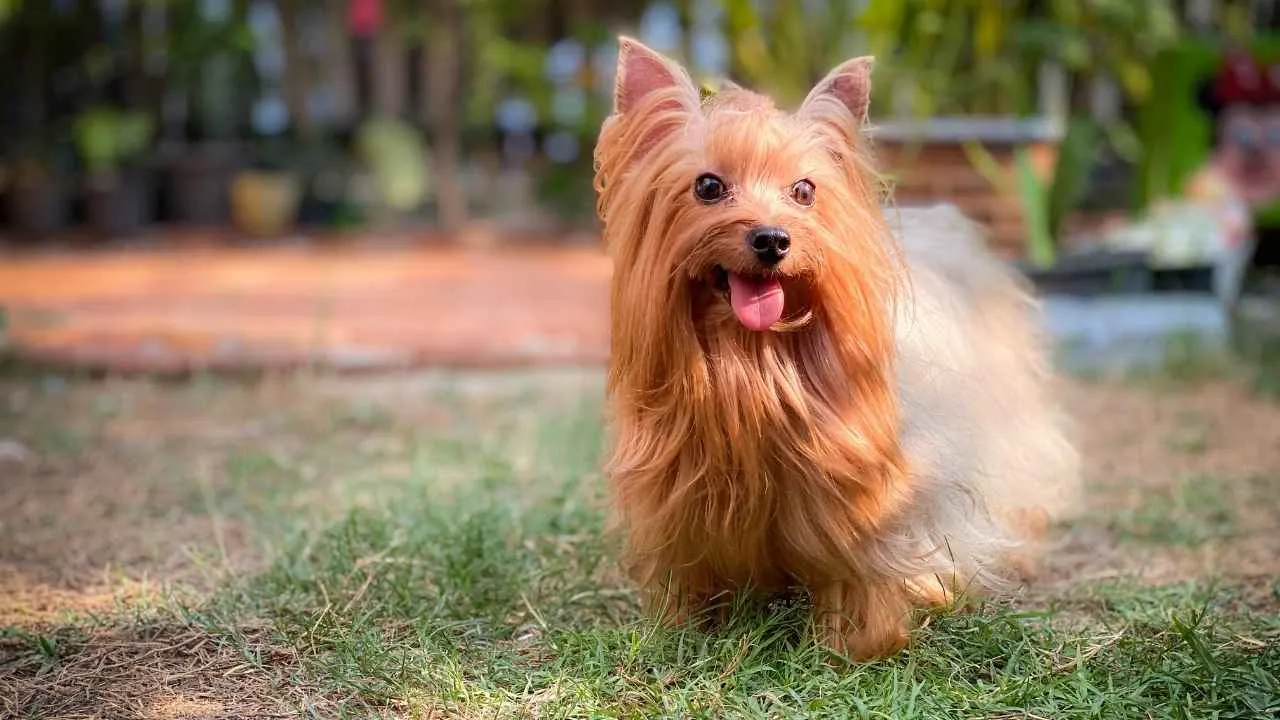
Bold, affectionate, and brimming with charm, they were originally bred to hunt rats in coal mines. This tiny terrier has transformed into a beloved household companion. Purina describes the Yorkshire Terrier as a toy-sized breed most recognized for its long, flowing coat that closely resembles the texture of human hair.
Standing just 7 to 8 inches tall and weighing around 7 pounds, Yorkies carry a surprising amount of personality in their petite frames. They are alert, vocal, and often act like watchdogs, keenly aware of their surroundings and eager to alert their humans to anything unusual.
Care Needs
Though their long, silky coat is beautiful, it requires daily grooming to prevent tangles and keep it in top condition, similar to caring for human hair. Yorkshire Terriers are high-energy dogs that need regular exercise, including at least 30 minutes of walking or active play daily. They thrive on mental stimulation and enjoy interactive games.
While they’re suited to city life and small homes, they benefit from access to a small garden and should be socialized early if living with children or other pets. Training is essential, especially to manage their vocal nature and occasional stubborn streak.
Fact: A brave Yorkie named Smoky served in World War II, flying 12 combat missions and becoming the first recorded therapy dog to comfort wounded soldiers.
5. Cavalier King Charles Spaniel
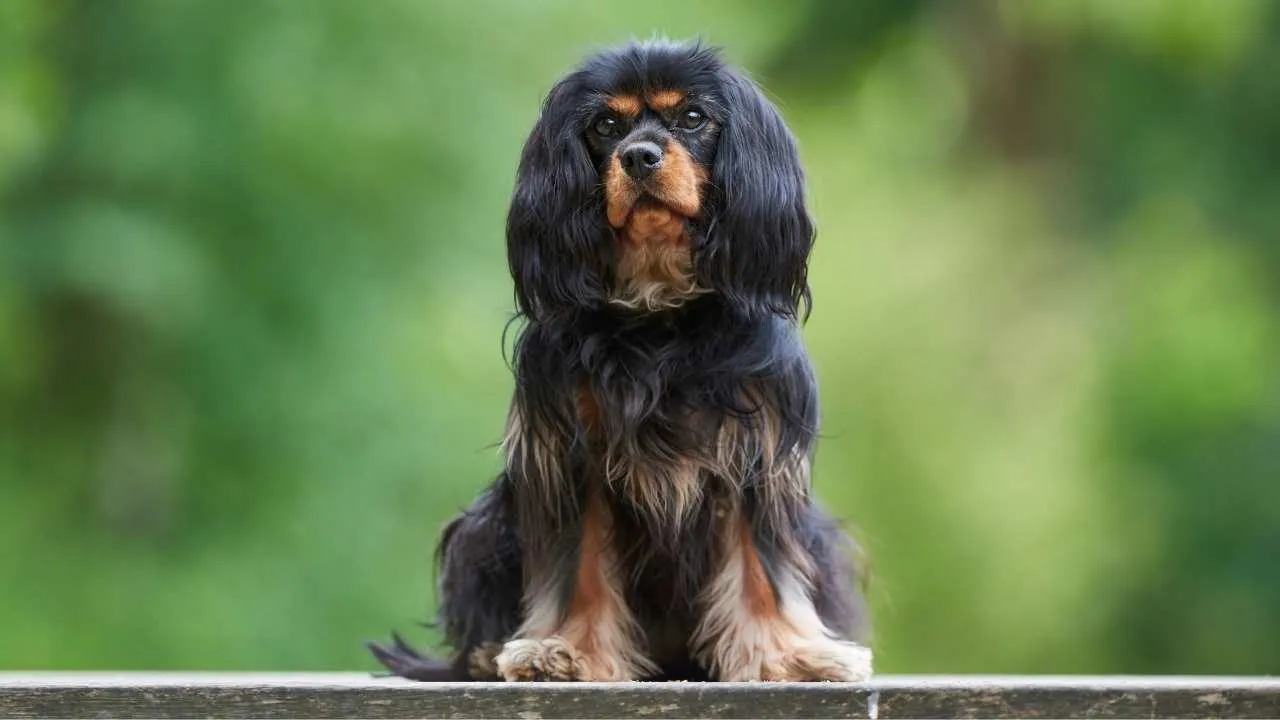
Renowned for their regal appearance and gentle disposition, the Cavalier King Charles Spaniel continues to be one of the most adored small dog breeds. With their expressive eyes, silky coat, and affectionate temperament, these pups make wonderful companions for families, singles, and seniors alike.
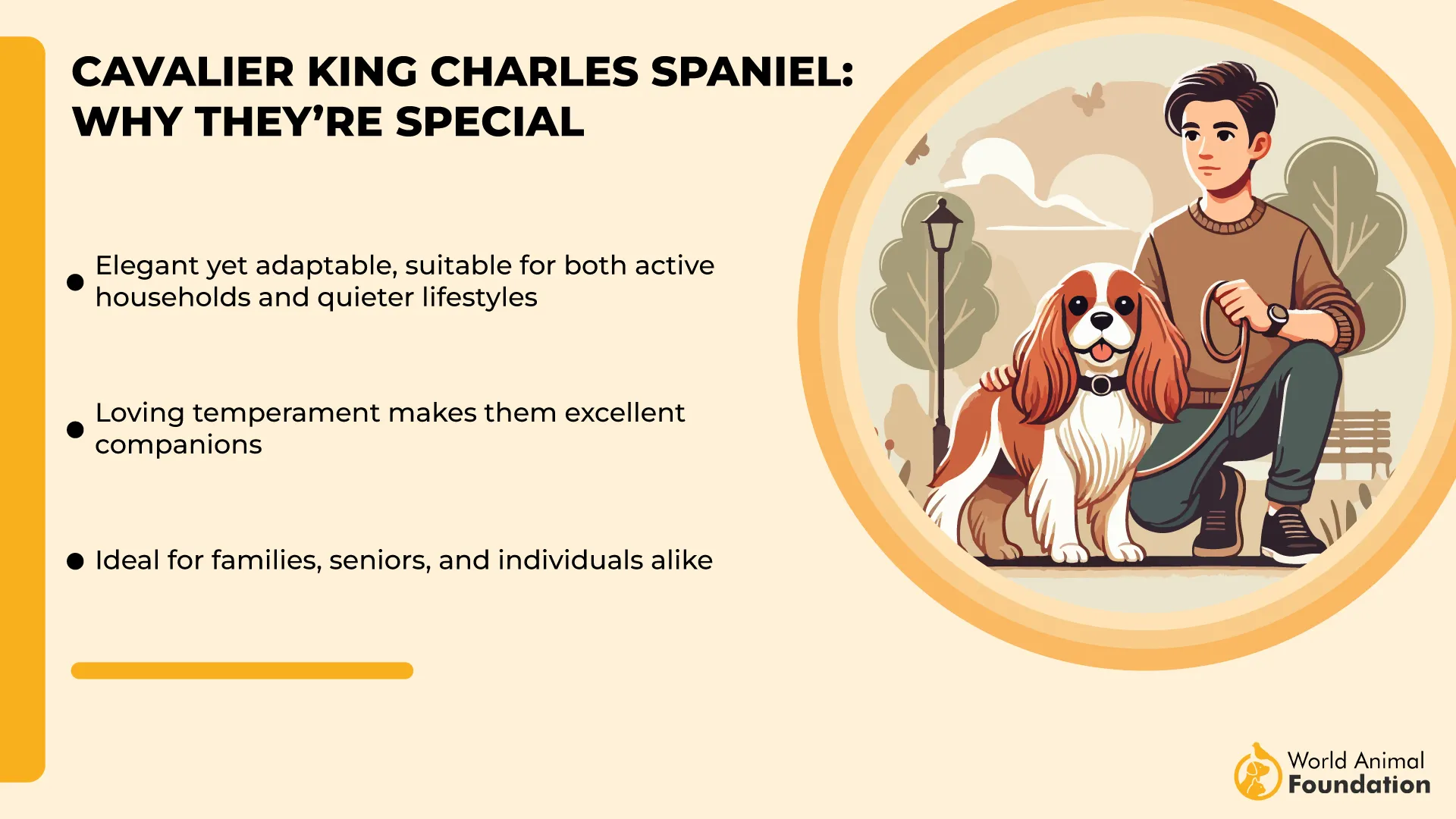
Though classified as a toy breed, Cavaliers have a surprisingly active side and thrive on both human attention and outdoor play. Their eagerness to please, combined with a love for cuddles, makes them a favorite for households seeking a balanced and loving canine companion.
Care Needs
Cavaliers enjoy a moderate energy lifestyle. They benefit from daily walks, ideally 30 to 60 minutes, and appreciate extra playtime like fetch or interactive games. Their long, feathery coat requires regular grooming to prevent matting, especially around the ears.
A thorough brushing a few times a week, combined with occasional baths, helps keep their fur soft and healthy. They are highly food-motivated, which makes training easier, but also means portion control is key to avoid unwanted weight gain.
Fact: Despite their cuddly nature, Cavaliers are not couch potatoes; they require consistent exercise and mental stimulation to stay fit and content.
6. Shih Tzu
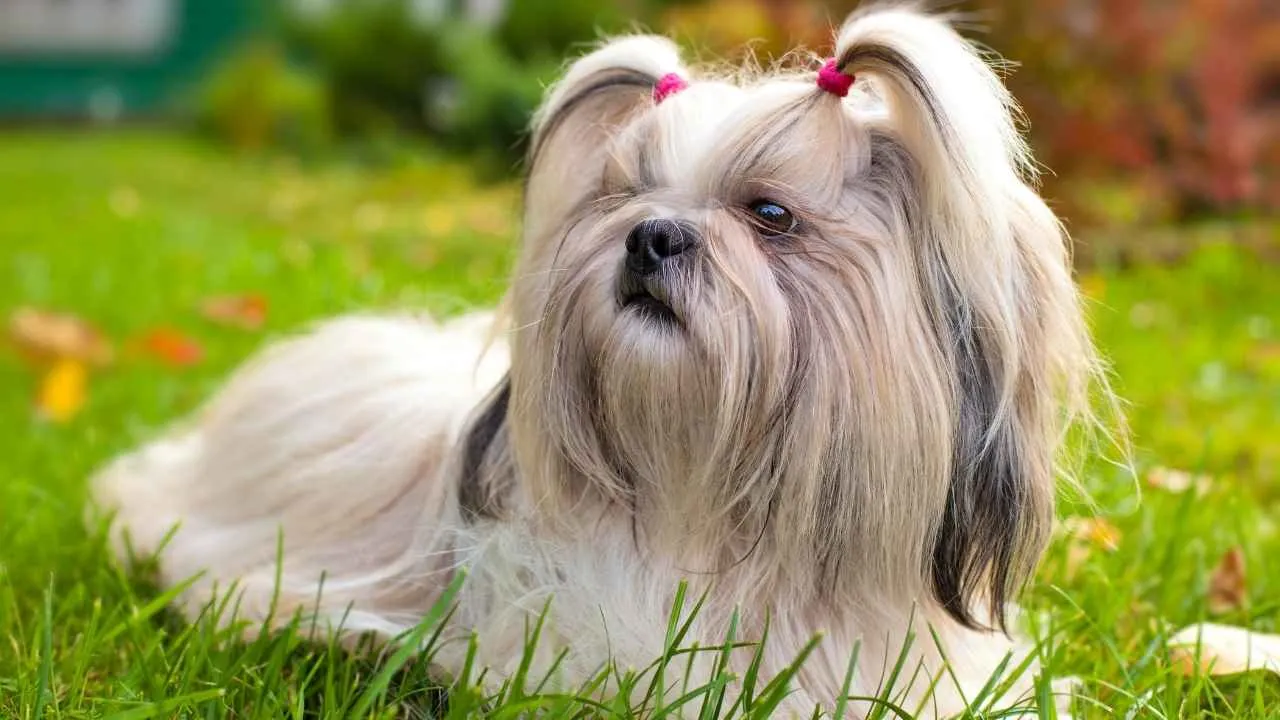
They have a sweet temperament, an elegant appearance, and a rich royal history. Bred solely for companionship, this charming lap dog was once a favorite among Chinese imperial families. Today, its friendly and outgoing personality makes it a beloved family pet.
With a weight range of 9 to 16 pounds and a height of 8 to 11 inches, the Shih Tzu is small in size but big on affection and confidence. They thrive on human interaction and are typically good with children, other dogs, and animals.
Care Needs
Though their affectionate nature makes them low-maintenance emotionally, their grooming needs require commitment. The Shih Tzu’s luxurious, long double coat grows continuously and can easily mat or tangle without regular brushing.
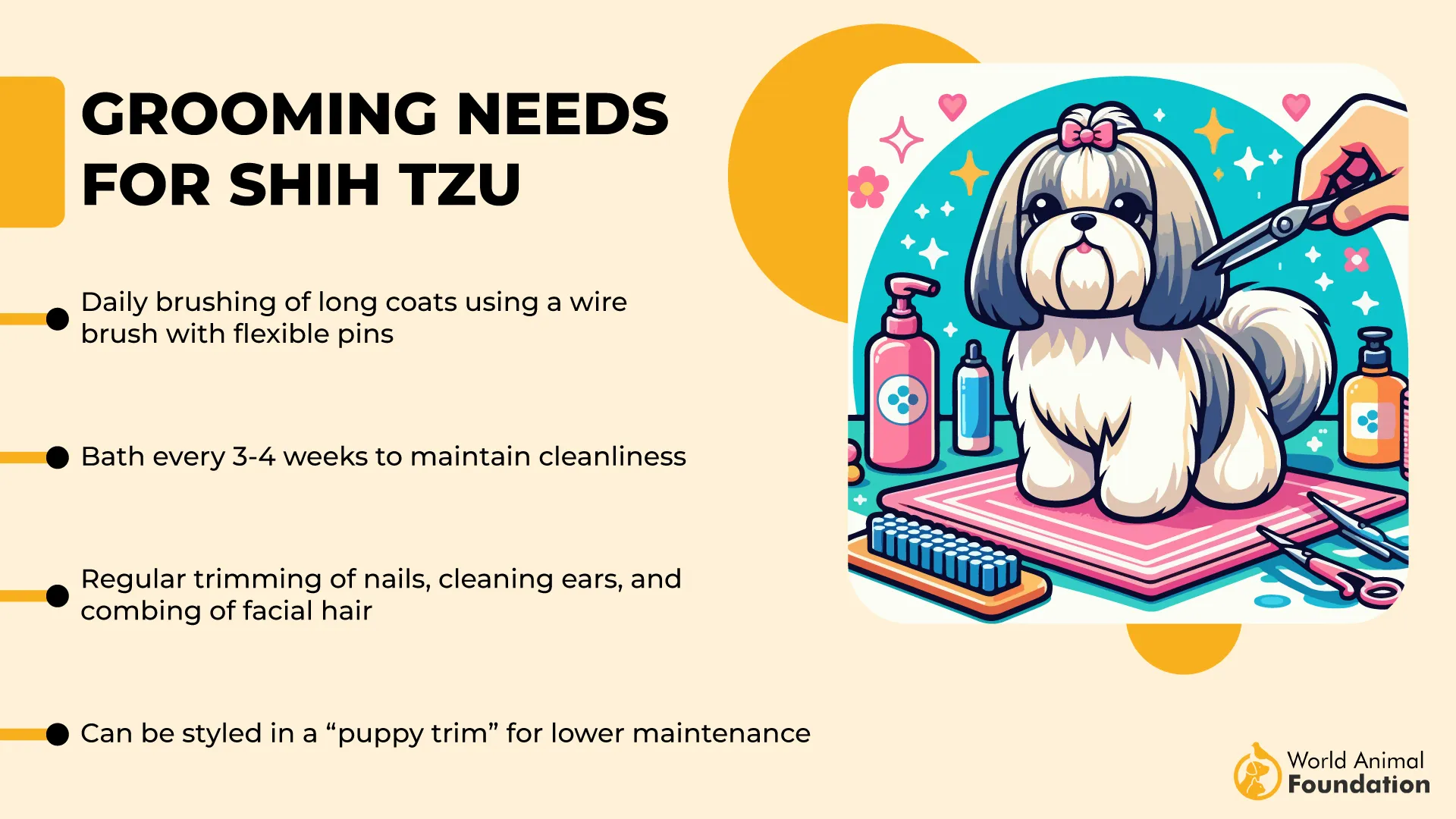
Many pet parents opt for a shorter “puppy cut” for easier upkeep. While considered hypoallergenic, their coat still requires daily brushing and routine baths. Shih Tzus need moderate exercise, daily walks, and indoor play, usually suffice, and benefit from early socialization to prevent unwanted barking or anxiety.
Fact: The name “Shih Tzu” means “lion dog” in Mandarin, a nod to their lion-like appearance and their revered status in ancient Chinese royalty.
7. Chihuahua
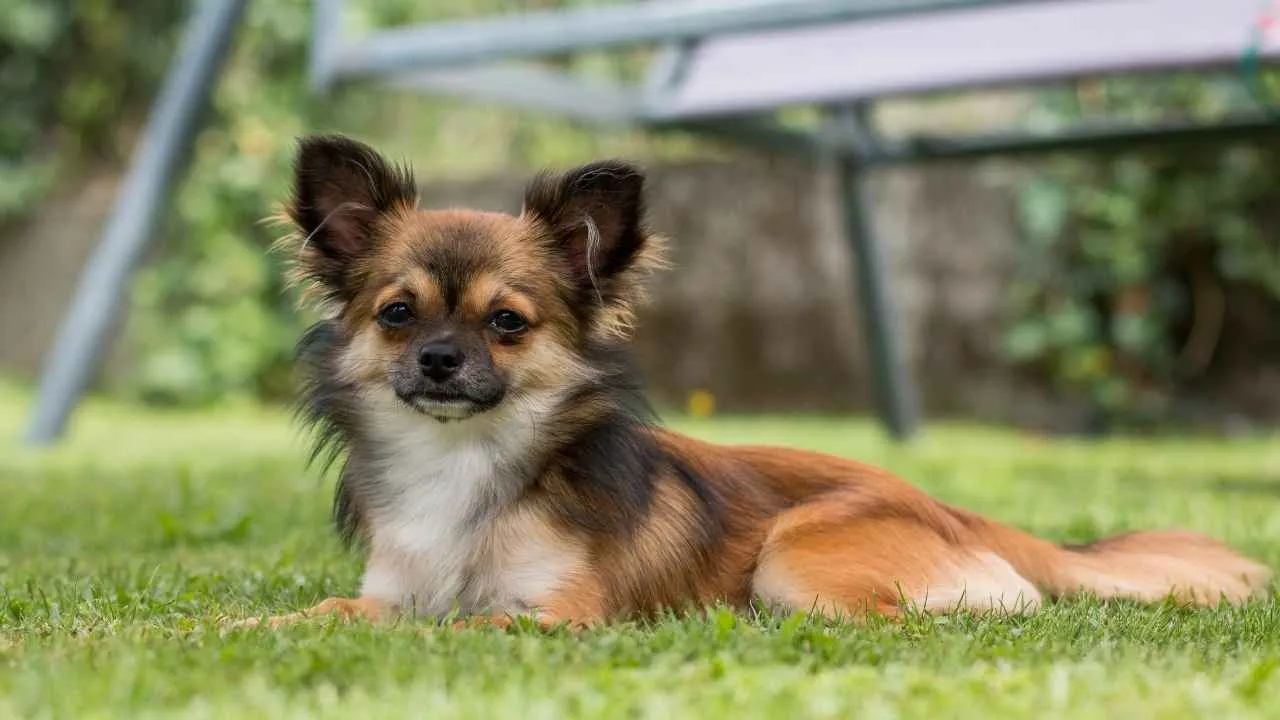
The Chihuahua stands out not just for its tiny stature but for its bold personality. Often weighing no more than 6 pounds and standing just 5 to 8 inches tall, these dogs pack a punch when it comes to attitude.
Fiercely loyal and alert, Chihuahuas form close bonds with their favorite humans but may remain cautious around strangers. Their high energy levels and confident demeanor make them lively companions, especially in homes where they can be the center of attention.
Care Needs
Despite their size, these little dogs are active and curious, requiring daily play and mental stimulation to stay content. Puzzle toys and solo play can help satisfy their independent streak, but they also crave interaction with their owners. Due to their small build, they’re more comfortable in adult-only households or with older children.
Their smooth or long-haired coat types are relatively low-maintenance, needing only occasional brushing and routine grooming. Early socialization is crucial to help them adjust to new people and environments without fear or anxiety.
Fact: Originating from Mexico, today’s Chihuahuas descend from an ancient mute companion breed, but modern Chis are anything but silent, often vocalizing their opinions with gusto.
Conclusion
From the charming French Bulldog to the feisty Chihuahua, the most popular small dog breeds continue to win hearts around the world thanks to their adaptability, affectionate personalities, and compact size. These dogs are ideal for city dwellers, first-time owners, and families alike, offering companionship without requiring large living spaces or high-maintenance routines. Their popularity isn’t just about size, it’s about personality, versatility, and that undeniable “it” factor.
Whether you’re looking for a devoted lap dog like the elegant Maltese or a spirited, high-energy companion such as the Jack Russell Terrier, small breeds bring big joy into everyday life. Many of these breeds, including the classic Boston Terrier, are not only favorites in homes but also frequent stars at dog shows, where their charm and poise shine. These pups may be little, but they make a huge impression wherever they go.
If you’re searching for one of the best small dog breeds to welcome into your life, this list is a great place to start, each breed offering its own blend of loyalty, liveliness, and love in a perfectly petite package.


